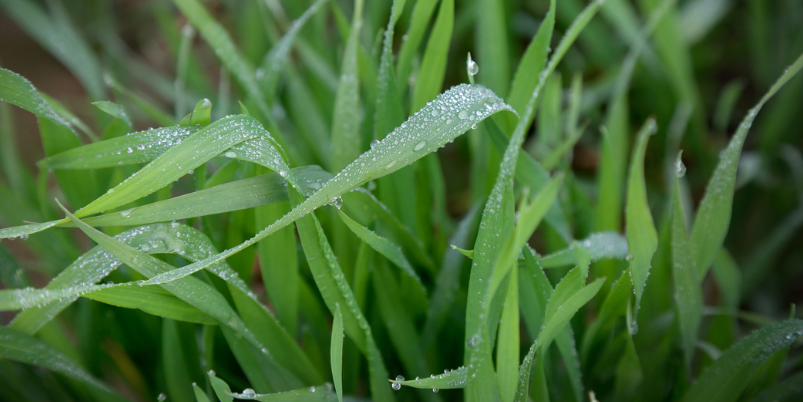Dry conditions can cause residual herbicides to fail
Dry conditions can cause residual herbicides to fail because soil moisture plays a crucial role in herbicide activation and uptake. With low rainfall you could find there is insufficient moisture to move your herbicide to the weed zone or for absorption in to weeds.
In a dry spring / autumn, you could find your soils lacking the moisture that is needed for residual herbicides to perform effectively. The herbicides you choose to use and your soils will influence just how much is needed, and adding an effective soil-acting adjuvant could actually help alleviate the issues.
Potential impact of dry conditions:
- Low herbicide concentration in the weed zone leads to poor weed control
- Insufficient soil moisture for herbicide uptake to occur
- Follow up contact herbicide required
Soil moisture is a key imperative for residual herbicide activity
Moist seedbeds are critical for herbicide activation and uptake. Only in the presence of moisture can your herbicides move from the soil surface where you applied them, down to the weed germination zone where they can be taken up. Typically 0.5 inches of rainfall following application is sufficient.
But dry conditions can cause residual herbicides to fail. This is because there may be insufficient moisture to move the herbicide to the weed germination zone as soils dry out. This will result in poor herbicide uptake and poor control of weeds. The amount of rainfall required depends on soil moisture ahead of application and:
- Your herbicide
- Soil type


How much moisture your herbicide needs depends on its chemical properties
How far your herbicide moves in the soil following a rainfall event and how much moisture it needs for uptake into weeds depends on it’s:
- Water solubility – how easily it dissolves in water
- Soil adsorption characteristics – how strongly it absorbs to the soil
For herbicide actives not listed in the table, you can check a herbicide’s water solubility and adsorption here.
Herbicides with low water solubility & high soil adsorption struggle most in dry soils
Your herbicide active ingredients that have low water solubility and high-very high adsorption to soil, will be affected most by dry soils following application.
This is because as soils dry out, active ingredients move from the soil water, to adsorption sites on soil colloids, where they become locked up. The higher your herbicide’s adsorption value, the greater the binding.
And with tighter binding, the more rain that is needed to release the herbicide back in to the soil water for uptake in to weeds. Remember, only when they are dissolved in soil water will your herbicides passively be absorbed by weeds.


Herbicides with high water solubility & low soil adsorption can cope better in dry soils
Whilst all herbicides need moisture, those with high water solubility and low-medium soil adsorption need less rainfall for activation. They also need less moisture in the weed zone for uptake to occur.
This is because they do not bind so tightly to soil colloids and dissolve easier in soil water. It is worth keeping this in mind and choosing your products carefully in a dry spring/autumn.
Conversely herbicides with high water solubility and low adsorption will be most at risk of leaching following heavy rainfall. You can find out more about the risks here.
Soil type will also play a part in how well your herbicide fairs in dry conditions
Soil type can influence herbicide performance because it affects moisture retention and herbicide binding.
Sandy soils have hardly any binding sites for moisture and herbicides. They will dry out quickly, but as long as there is some moisture, herbicides will move more freely.
Loamy soils have 1-5 binding sites so will retain more moisture and herbicides than sands.
Clay soils have as many as 35 binding sites. Herbicides with high soil adsorption properties will bind very tightly in clay soils and need a lot more moisture than a loamy soil to work in dry soils.


Try to use herbicides that will be most suited to the conditions
It might be easier said than done, but now you understand more about how moisture influences residual herbicide performance, it is worth keeping it in mind when you choose your products this spring / autumn. Selecting the ones that will perform best in the conditions and in your soil types might just help make your weed control more effective.
Backrow Max can also help to reduce herbicide dependancy on rainfall
Although it won’t solve the problem of no rain for weeks on end, adding adjuvant Backrow Max to residual herbicide sprays can at least reduce dependancy on it.
Likened to rain-in-a-can, trials in The Netherlands show that Backrow Max can increase moisture retention by as much as 30%.
Most recently in spring barley, we have seen improvements of nearly 20% weed control, albeit from a low base.


Key benefits of adding Backrow Max pre- & peri-emergence
- More targeted application – maximises herbicide coverage and deposition across the soil
- Improves performance in dry conditions – lowers herbicide dependency on rainfall for activation & uptake
- Improves performance in wet conditions – reduces chemical leaching from the weed zone after heavy rainfall, creating a stronger barrier to emerging weeds
- Protects crop & groundwater safety after high rainfall – reduces chemical leaching by as much as 60%
You can find out more here.
Learn more about tank mix Adjuvants


They’re not all muck and mystery! Master tank mix adjuvants and you’ll be able to select the right ones so you can push your pesticide performance to the max.
Learn more







